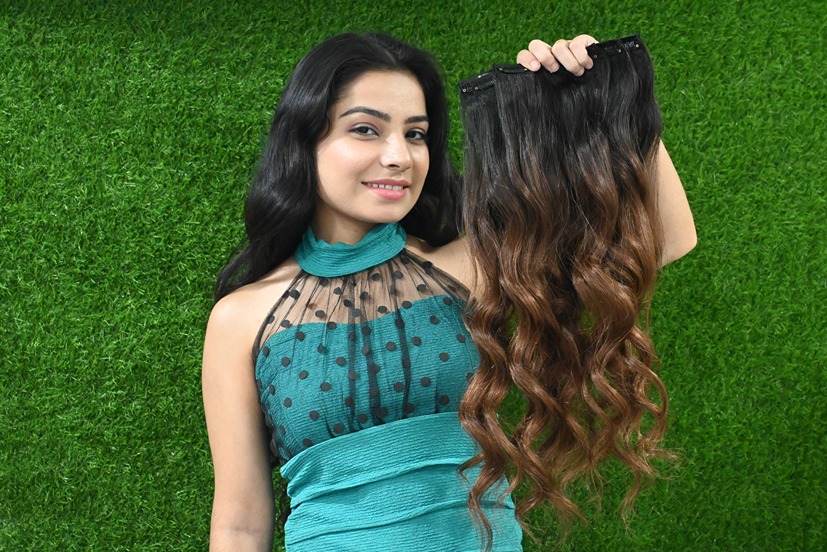Hair extensions and wigs can instantly transform your look, adding volume, length, and versatility to your hairstyle. However, like natural hair, they require consistent care, especially at night. Many people invest in high-quality wigs or human hair extensions, only to find that improper nighttime routines lead to tangling, matting, shedding, or dryness. The good news? A proper nighttime hair care routine can preserve the quality of your hair investment, extend its lifespan, and ensure you wake up with manageable, beautiful hair.
In this blog, we’ll walk you through a comprehensive nighttime routine tailored specifically for wigs and extensions. Whether you wear clip-ins, tape-ins, sew-ins, or lace front wigs, following these tips will help keep your hair smooth, detangled, and in perfect shape day after day.
Why Nighttime Hair Care Matters for Extensions and Wigs
During sleep, your hair is exposed to friction from your pillowcase, bedding, and natural tossing and turning. For natural hair, this can cause breakage and split ends. But for wigs and extensions, the damage can be even worse—tangling, knotting at the roots, loosening of bonds, and even shedding of strands.
By taking just a few extra minutes each night to follow a protective hair care routine, you can significantly reduce wear and tear. Not only will your extensions and wigs look better longer, but you’ll also save time in the morning styling them.
Step 1: Detangle Before Bed
The first step in any nighttime routine for wigs or extensions is gently detangling the hair. This prevents knots from forming overnight and helps maintain the smooth texture of the hair.
- For clip-ins and removable wigs: Remove them before brushing.
- For sew-ins, tape-ins, or bonded extensions: Keep them installed but brush carefully.
Use a wide-tooth comb or a loop brush specifically designed for hair extensions or wigs. Start from the ends and work your way up to the roots, holding the hair at the base to reduce tension on the bonds or wefts.
Brushing thoroughly before sleep helps prevent matting and tangling, two of the biggest causes of premature hair damage.
Step 2: Apply a Lightweight Leave-In Conditioner or Serum
Extensions and wigs—especially human hair types—don’t benefit from your scalp’s natural oils, so they require additional moisture. Applying a light leave-in conditioner or a nourishing serum before bed can help maintain softness and hydration overnight.
Make sure to use products that are:
- Free of sulfates and alcohol
- Lightweight and non-greasy
- Formulated for human hair or wigs
Apply from mid-length to the ends and avoid the roots or bonds to keep the attachment points secure.
Step 3: Choose a Protective Hairstyle
Leaving your hair loose while you sleep is one of the fastest ways to invite tangling and frizz. Instead, opt for a protective nighttime hairstyle that minimizes friction and keeps the hair in place.
Here are a few options:
- Loose braid: A single loose braid or two braids helps prevent knots and keeps curls intact.
- Low ponytail: Secure with a silk scrunchie to reduce stress on the bonds.
- Twist-out: For curly or textured extensions, twist sections of hair to preserve curl patterns.
Avoid tight hairstyles that create tension or pull on the bonds. The goal is to keep the hair controlled and protected without strain.
Step 4: Sleep on a Silk or Satin Pillowcase
Your pillowcase fabric plays a huge role in how your hair behaves overnight. Cotton pillowcases absorb moisture and cause friction, leading to dryness and tangling. In contrast, silk or satin pillowcases are smooth, non-absorbent, and gentle on hair.
If you wear wigs or extensions regularly, investing in a silk pillowcase is one of the easiest ways to improve your nighttime routine. It reduces static, maintains moisture, and prevents knots from forming while you sleep.
Alternatively, you can use a silk bonnet or scarf to wrap your hair. This provides the same benefits and keeps your hair safely tucked in.
Step 5: Remove Temporary Extensions or Wigs
If you wear clip-in extensions, halo extensions, or detachable wigs, it’s best to remove them every night before going to bed. Sleeping with these types of hair accessories can cause stress to both your scalp and the extensions themselves.
Once removed:
- Brush gently
- Store in a satin bag, wig stand, or extension hanger
- Keep away from moisture and heat
Proper storage not only protects the shape and style but also ensures they stay clean and tangle-free between uses.
Step 6: Clean Your Scalp and Hairline (For Long-Term Wearers)
If you wear sew-ins, tape-ins, or bonded extensions for weeks at a time, it’s important to clean the scalp and hairline regularly. Sweat, oils, and product buildup can accumulate, leading to itching or even loosening of the extensions.
Use a scalp wipe, dry shampoo, or a cotton pad with witch hazel to gently cleanse your scalp, especially around the perimeter. Keeping your scalp fresh promotes better extension longevity and scalp health.
Step 7: Regular Deep Conditioning (1–2 Times Weekly)
While this isn’t an every-night task, incorporating deep conditioning into your weekly routine can do wonders for your extensions or wig. This is especially important if you use heat styling tools or color-treated extensions.
Once or twice a week:
- Apply a deep conditioning mask
- Let it sit for 15–20 minutes
- Rinse thoroughly and allow hair to air dry
Regular conditioning helps retain softness, elasticity, and overall quality of the hair.
Bonus Tips for Long-Term Care
In addition to your nightly routine, here are some bonus tips that will help maintain your wigs and extensions longer:
- Avoid sleeping with wet hair: Always make sure your extensions or wig are fully dry before bed to avoid matting and mildew.
- Minimize heat styling during the week: Heat can dry out extensions, especially at the ends. Opt for heat-free styles when possible.
- Schedule regular maintenance: If you wear long-term extensions, visit your stylist every 4–6 weeks for adjustments and checks.
- Keep your natural hair healthy: A healthy foundation ensures your extensions or wig always look their best.
Final Thoughts
Wigs and hair extensions are incredible tools to express your style and boost your confidence, but they require dedicated care, especially at night. By incorporating a simple and consistent nighttime hair care routine, you can prevent tangling, reduce shedding, and extend the life of your hair investment. From detangling and moisturizing to protective hairstyles and silk pillowcases, these small steps make a big difference over time.
Your hair deserves to look and feel its best, day and night. With just a few adjustments to your evening habits, you’ll enjoy smoother, shinier, and longer-lasting hair every single morning.

